Florida Frontiers Articles
Florida Frontiers: The Weekly Newspaper Articles of the Florida Historical Society is a weekly newspaper article covering history-based events, exhibitions, activities, places and people in Florida. The newspaper articles premiered in January 2014. We explore the relevance of Florida history to contemporary society and promote awareness of heritage and culture tourism options in the state.
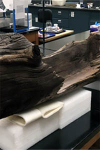
Nearly a year ago, hurricane Irma swept through Brevard County.
The day after the storm, September 11, 2017, Rockledge photographer and archaeology enthusiast Randy Lathrop, also known as Randy Shots, discovered that the hurricane had dislodged an historic canoe and washed it ashore from the Indian River in Cocoa.
The 15 foot, 700 pound canoe captured the public’s imagination.
The story made the front page of the Wall Street Journal, was published in Smithsonian magazine, and went viral on social media. The fact that the canoe was challenging for archaeologists to date and analyze just added to its mystique.
A year later, after extensive testing, archaeologists a... click title or here for the full article
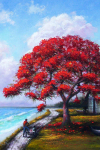
Over the past few decades, the mid-twentieth century paintings by a group known as the Highwaymen have become some of the most popular artwork produced in Florida.
The new exhibit “Paintings of Nostalgic Florida: The Original Highwaymen Artists” is on display at the Brevard Museum of History and Natural Science April 6—28.
The opening reception on Friday April 6 at 6:00pm features wine, heavy hors d’oeuvres, and the opportunity to meet living Highwaymen artists. A presentation will be given by Gary Monroe, author of the book “The Highwaymen: Florida’s African American Landscape Artists.” Tickets are $25 per person ($20 for FHS Members) and are available at myfloridahistory.org.
The Highw... click title or here for the full article
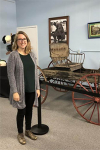
There are two temporary exhibits focusing on local history and culture currently on display at the Brevard Museum of History and Natural Science, 2201 Michigan Avenue, Cocoa.
“Cocoa: A Hometown History” is on display through May 5, and “A Time to Shine: Mismatched Items from the Permanent Collection” can be seen through March 31.
“We really want to explore the unique sides and aspects of the different towns within Brevard County, and it made sense to start with Cocoa, home of the Brevard Museum,” says museum manager Madeline Calise. “It led us to looking at the buildings that have stood since the beginning of settlement in the area, the p... click title or here for the full article

Kevin McCarthy has written several popular books focusing on African American history and culture in Florida.
From 1969 to 2005, McCarthy taught at the University of Florida. He has written or edited 35 books, 30 of them about Florida. His books include “The Book Lover’s Guide to Florida,” “Florida Lighthouses,” “Thirty Florida Shipwrecks,” and “Twenty Florida Pirates.”
Despite his diverse interests, the author keeps returning to the topic of black history in the Sunshine State.
“I bought a pup tent in 1976, camped my way around the state of Florida, just to learn as much as I could abo... click title or here for the full article
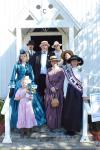
Touring an historic cemetery can be like visiting a museum.
As you walk among the headstones, markers, and memorials, you can gain insight into the lives of individual pioneers, people who gave their lives in service to their country, and the lives of children cut tragically short.
Guided, themed cemetery tours will be part of the seventh annual Pioneer Day to be held Saturday, February 10th from 10 am to 4 pm at St. Luke’s Episcopal Church and the historic Sams House, both on North Tropical Trail, Merritt Island.
The Sams, LaRoche, Porcher, and other families came from the Charleston,... click title or here for the full article
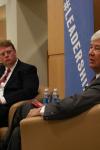
Senator Bob Graham and attorney Chris Hand, co-authors of the book “America, The Owner’s Manual: You Can Fight City Hall and Win,” participated in a panel discussion recently at the Zora Neale Hurston Festival of the Arts and Humanities in Eatonville.
The topic was “Citizen Activism Works.” The panelists talked about effective ways that anyone with passion for a particular issue can make the government work for them.
Senator Bob Graham is one of Florida’s most respected and popular politicians. He served four years in the Florida legislature before becoming governor in 1978. He left office with an 83% approval rating, and beginning in 198... click title or here for the full article
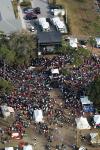
The 29th annual Zora Neale Hurston Festival of the Arts and Humanities is underway and continues through January 28.
The event is presented by the Association to Preserve the Eatonville Community, and includes a series of presentations in a “Communities Conference” at Rollins College and in Eatonville.
Presenters at this year’s event include poet Sonia Sanchez; producer, recording artist, and actor David Banner; host of the NPR program 1A, Joshua Johnson; and Senator Bob Graham. The popular HATitude luncheon features fashion and food, and the exhibit “An Eatonville Remembrance” is at the Hurston Museum.
... click title or here for the full article
When you read the terms “digital history” or “digital humanities,” you might think of online access to scanned primary source documents such as journals, photographs, or maps. While that’s important, there’s much more to digital history.
“We can interact with the public in a way we couldn’t before,” says Connie Lester, director of the RICHES Project in the public history program at the University of Central Florida, an interdisciplinary effort that records and preserves the documents and stories of Florida communities, businesses, and institutions.
“The public then becomes involved in the collection and interpretation of the history,” says Lester. “The digital tools allow us to do that. The digital tools allow us to... click title or here for the full article
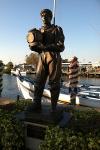
Since 1906, people have gathered at Spring Bayou in Tarpon Springs each January 6th to watch young men compete to find a submerged wooden cross. Today, thousands attend the ceremony. The unique Epiphany celebration is one example of the Greek culture that is still prevalent in Tarpon Springs.
In the city of Tarpon Springs you can listen to Greek music played on a bouzouki, try the pastry baklava, have a meal of lamb stew or a Greek seafood dish, sip the licorice flavored alcoholic beverage ouzo, and enjoy many other aspects of traditional Greek culture.
You can see the Neo-Byzantine style architecture of St. Nicholas Greek Orthodox Church... click title or here for the full article
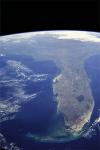
Florida used to be located at the South Pole.
As part of the continent Gondwana 650 million years ago, the foundation of Florida was tucked between the land masses that would become South America and Africa. The rest of eastern North America was then part of another continent called Laurentia. As the Earth’s tectonic plates shifted, the basement rocks of our modern continents moved across the globe.
About 300 million years ago, Gondwana and Laurentia collided, forming the Appalachian Mountains in what would become North America and the Mauritanide Mountains in what would eventually be Africa. The Florida portion of Gondwana joined with L... click title or here for the full article
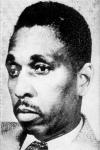
On Christmas night 1951, a bomb exploded under the Mims home of educator and civil rights activist Harry T. Moore. The blast was so loud it could be heard several miles away in Titusville.
Moore died while being transported to Sanford, the closest place where a black man could be hospitalized. His wife Harriette died nine days later from injuries sustained in the blast.
The couple celebrated their twenty-fifth wedding anniversary on the day of the explosion, and Harriette lived just long enough to see her husband buried.
The Moore’s daughter, Juanita Evangeline Moore, was working in Wa... click title or here for the full article
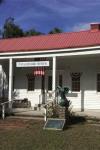
The small town of Palatka, Florida is about 60 miles south of Jacksonville, 45 miles east of Gainesville, and 29 miles southwest of St. Augustine. It’s the home of St. Johns River State College and the Florida School of the Arts, headquarters of the St. Johns Water Management District, and the site of Ravine Gardens State Park.
A quiet little town today, Palatka has a rich and colorful history.
“I’m a fifth generation on my mother’s side, born and raised in Palatka,” says Larry Beaton, historian of the Putnam County Historical Society. “My great-great grandfather was Robert Raymond Reid, who was the son of the fourth territorial governor,... click title or here for the full article
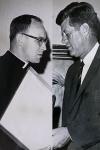
On November 22, 1963, President John F. Kennedy was shot and killed as his motorcade drove through Dallas, Texas.
President Kennedy spent the week before his death in Florida.
After a short stay at his family’s winter residence in Palm Beach, Kennedy toured the NASA facilities at Cape Canaveral before visiting Tampa and Miami.
On his last day in Florida, President Kennedy met with Florida historian and Catholic priest Michael Gannon. As the first and only Catholic American president, Kennedy was particularly interested in Gannon’s area of expertise, Catholicism in Spanish Colonial Flori... click title or here for the full article
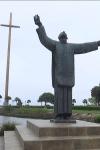
Tradition holds that the first Thanksgiving was celebrated in 1621, as English Pilgrims at Plymouth Plantation in Massachusetts shared a bountiful harvest with their Native American neighbors.
The first Thanksgiving celebration in North America actually took place in Florida.
Fifty-five years before the Pilgrims landed at Plymouth Rock, colonists in St. Augustine shared a feast of thanksgiving with Native Americans.
Florida historian Michael Gannon, who died on April 10, 2017 at the age of 89, found documents supporting Florida’s claim to the “real” first Thanksgiving celebration.
... click title or here for the full article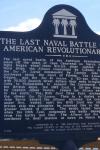
People often think of history as permanent, unchangeable, and irrefutable; a static set of facts that can never change.
Contrary to popular belief, history is constantly changing.
These revisions of history become necessary when new primary source documents are discovered that contradict long held assumptions, or well-known primary sources are reevaluated with fresh eyes and new conclusions are reached. Over time, societal norms evolve and change, providing historians different lenses through which to view the past.
Sometimes, particularly with local histories, ideas about the past can... click title or here for the full article
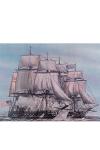
The British controlled Florida from 1763 to 1783, encompassing the entire American Revolution. Florida remained loyal to England and King George III throughout the conflict.
The last naval battle of the American Revolution took place off of Cape Canaveral on March 10, 1783. Two American ships, the Alliance and the Duc de Lauzun, were on a mission to bring 72,000 Spanish silver dollars from Cuba to the American colonies to pay the Continental soldiers.
The American ships were intercepted by three British ships, the Alarm, the Sybil, and the Tobago at Cape Canaveral.
“I think in my arti... click title or here for the full article
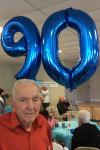
On Sunday, October 29, hundreds of people gathered at the Cocoa-Rockledge Garden Club to wish George “Speedy” Harrell a happy 90th birthday. The venue was full all afternoon as family and friends came and went to the “open house” style event that featured refreshments, a slide show of images featuring Harrell, and, of course, birthday cake.
Harrell was seated in a rocking chair at the center of the room, greeting a steady stream of well-wishers.
While his actual birthday is September 28, Harrell decided to postpone his birthday celebration so that relatives from Texas could join the festivities.
... click title or here for the full article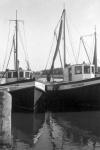
There’s something distinctly Floridian about watching shrimp boats trawling our coastal waters, particularly in the northeastern part of the state. Shrimping and shrimp boat building have been an important part of the culture of St. Augustine and Fernandina Beach for more than a century.
“Mike Salvador was a fisherman, he was a mariner, he was an entrepreneur,” says maritime historian Brendan Burke, co-author of the book “Shrimp Boat City: 100 Years of Catching Shrimp and Building Boats in St. Augustine, the Nation’s Oldest Port.” “In Fernandina in the first decade of the twentieth century, he assembled what I would consider to be the greatest maritime chapter in Florida’s state history.”... click title or here for the full article
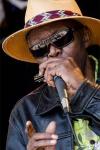
Florida Frontiers is the name of this column. It’s also the name of a public radio program, podcast, and public television series produced by the Florida Historical Society. In all its forms, Florida Frontiers celebrates the diverse history and culture of our state.
The second annual Florida Frontiers Festival will be held Saturday, October 21, from 11am to 5pm on the grounds of the Brevard Museum of History and Natural Science, 2201 Michigan Ave., in Cocoa.
The event will feature a day of Florida music, demonstrations including Highwayman artist R.L. Lewis, vendors, food, a beer garden, and a children’s area with a “bouncy house” and ga... click title or here for the full article
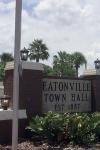
Many people are familiar with the work of writer, folklorist, and anthropologist Zora Neale Hurston, and the historic significance of the town of Eatonville, Florida, but that was not true 30 years ago.
In 1987, the town of Eatonville celebrated its centennial as the oldest incorporated African American municipality in the United States. That same year, community organizer N.Y. Nathiri attended a public hearing about the proposed widening of Kennedy Boulevard into a five lane road. Listening to the discussion, Nathiri realized that the project would destroy her historic hometown.
“There are three ways that you destroy a community,” says N... click title or here for the full article
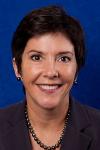
The Florida Constitution Revision Commission (CRC) has announced that Friday, October 6, is the deadline for members of the public to submit proposals for changing our state’s constitution.
That same day, historian and author Mary E. Adkins will give a free presentation called “The Same River Twice: Florida’s 1968 Constitution from Mid-Century Draft to 2018 Revision” at 7:00 pm in the Library of Florida History, 435 Brevard Avenue, Cocoa.
“We are very grateful to the thousands of Floridians who have participated in the CRC process either by attending our public hearings or submitting their own proposed changes to the Fl... click title or here for the full article

“Yesterday, December 7th, 1941, a date that will live in infamy, the United States of America was suddenly and deliberately attacked by naval and air forces of the Empire of Japan,” said President Franklin Delano Roosevelt.
Within an hour of FDR’s speech on December 8th, 1941, Congress voted to bring the United States into World War II.
A recording of FDR’s address to Congress can be heard as you enter the “Florida Remembers World War II” exhibit, on permanent display at the Museum of Florida History in Tallahassee.
“Florida’s role in World War II was really transformative,” says Bruce Graetz, senior museum curator. “Florida was a relatively rural area before World War II. There was a large influx of servicemen for training during the war, industry like ship buil... click title or here for the full article
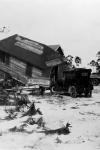
Texans are dealing with the aftermath of hurricane Harvey. Powerful hurricanes have impacted Floridians on multiple occasions.
The hurricane of 1928 was particularly devastating to residents of south Florida.
“When you talk about Florida, you have to talk about hurricanes,” says Eliot Kleinberg, author of the book “Black Cloud: The Deadly Hurricane of 1928.”
Kleinberg first heard about the hurricane of 1928 while working as a reporter for the Palm Beach Post. “In 1988, for the sixtieth anniversary of the storm, I was sent out to Belle Glade to cover a commemorative event. The more I tal... click title or here for the full article
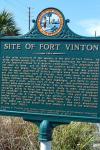
The life of a soldier who fought in Florida during the Second Seminole War is chronicled in detail in the new book “The Army is My Calling: The Life and Writings of Major John Rogers Vinton, 1801-1847,” by John and Mary Lou Missall.
The married co-authors are best known for their first book, “The Seminole Wars: America’s Longest Indian Conflict.”
“I got interested in it while I was working on my Master’s degree through California State University,” says Mary Lou Missall. “I wanted to do my thesis on some aspect of Florida history.”
Realizing that there was a lack of scholarship on the... click title or here for the full article







